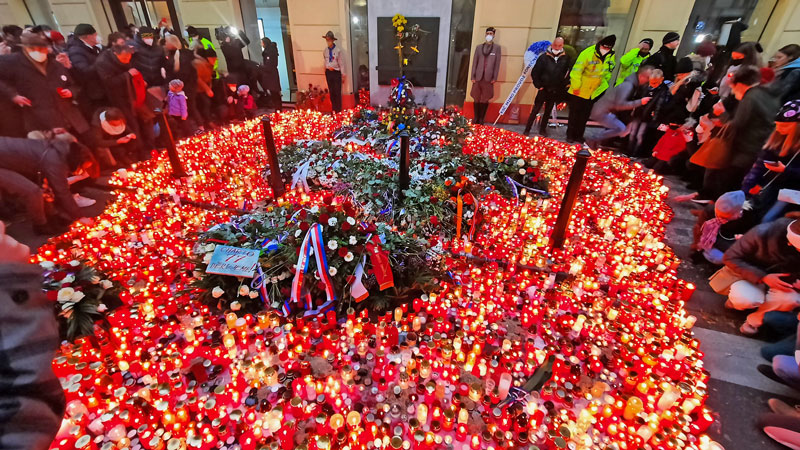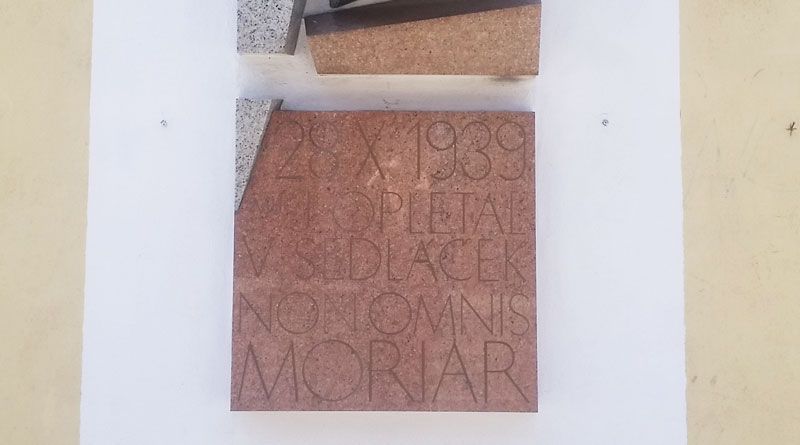Velvet Revolution The Path Less Travelled
You’ll have read that the Velvet Revolution started on International Students Day i.e. November 17th 1989 but, it started well before that. Actually you have to go back 50 years to understand that the students were protesting on an anniversary and go back another 20 years to explain why they were protesting at all. So lets set the record straight.

Ground Zero
The first thing that happened was the formation of Czechoslovakia when Independence from the Austro-Hungarian Empire is declared on October 28th 1918. What does this mean? it means that students claimed that day, October 28th, as a day of protest and were marching in the streets for years to come.

What about November 17th?
Up until 1939 the students were having their protests on October 28th but in 1939 they were generally protesting about the invasion of the city by Nazi forces. Students clashed with the German army and several were shot. One of them, Jan Opletal, was mortally injured and died on November 11th. His funeral was held on November 15th and thousands of people attended with many of these people calling for revenge against Jan Opletal’s killers. The SS Police Chief (one of the top Nazis in the city) was Karl Herman Frank. He ordered three things. 1) Closure of all colleges and universities in Prague, 2) Deportation of 1200 students away from Prague and 3) The execution of seven students and a professor. Post war Czechoslovakia will approach the League of Nations and request that the day of the executions, November 17th, be classified as International Students Day. This was granted. The Prague street called 17 Listopadu was named for this event.

So now you have found out why November 17th is International Students Day, you’ll understand that post World War 2 that students now switch their protest day from October 28th to November 17th and will continue to protest every year up to and including November 17th 1989.
The Trigger
This is the time of Gorbachev. Annual protests since the 1950s that have regularly been banned or harshly dealt with are still continuing but throughout 1989 have gone on without the usual level of oppression and brutality. It’s November 17th 1989 and as usual, a group of around 250 students are protesting outside the school where Jan Opletal attended, then they march to the end of the street where the police tried and failed to stop them. Then they marched along the riverside gathering in numbers before turning onto National Street (Narodni). Really the only intention is to finish their protest on Wenceslas Square but 300 metres from Wenceslas Square they are stopped at a line containing police and security services. The students realise that they will not be able to finish the protest on the square and begin to argue their case. This is shortly followed by street fighting at which point the trigger of the Velvet Revolution occurs. Czechs hear on German radio stations reports of students being beaten up and also that a student had been beaten to death in this fighting.
The Uprising
Lets not get all political about it. Lets not even suggest that the events in Berlin of the previous ten days had anything to do with it. On November 17th 1989, the inhabitants of Prague understood one clear fact. That on the 50th Anniversary of the execution of the students at the hands of the Nazis in 1939, their kids had been beaten up and another student had apparently given his life for freedom. The first 20,000 people on the streets were young and full of energy. Their parents had been the same in 1968 but this time something was different. It was clear that the military was not going to get involved so the people needed only to deal with the police and the hated security services. The rank-and-file police switch sides immediately ignoring orders from their command. The security services isolated and without support simply melt away and the protest culminates a mere three days later on November 20th with half a million people on the streets. What happened to the student who had been beaten to death? Well that was the mystery as it seems that nobody involved in the fighting saw anybody killed and nobody could quite remember how the story started or who had allowed it to be broadcast on the radio.
What happened next?
The saviour of the Velvet Revolution was not a single person. An effective but loosely held together opposition called the Civic Forum had enough talent and tenacity to get through the worst of it. The Communist government fell, the Communist President stayed in office long enough to call a new Presidential election resulting in Vaclav Havel being sworn in on December 28th 1989. Why is it called the Velvet Revolution? because nobody died. The rumour of the student being beaten to death turned out to be just that, a rumour.
Something Related or a Few Minutes Away
Activity – Prague City Walking Tour
